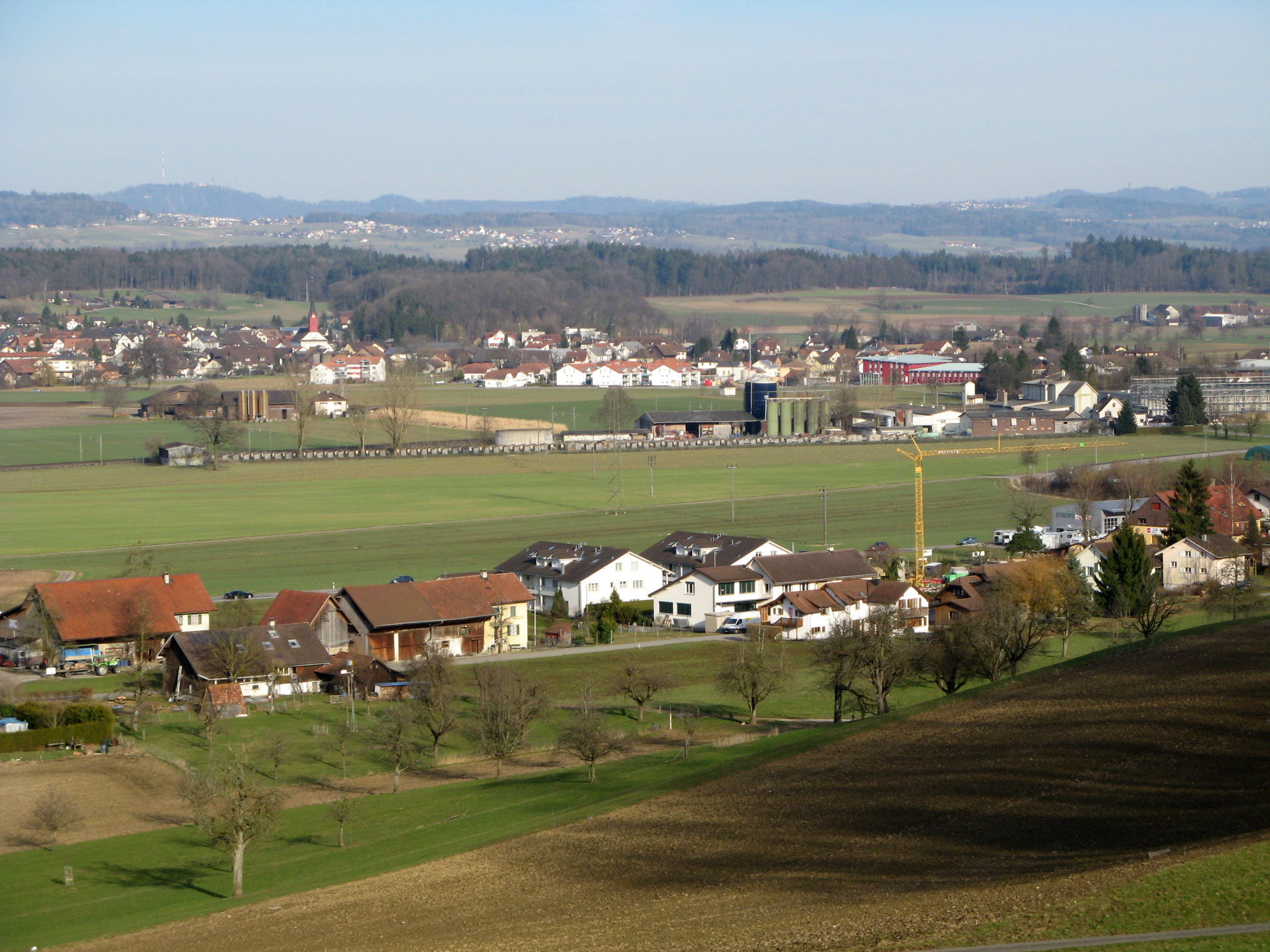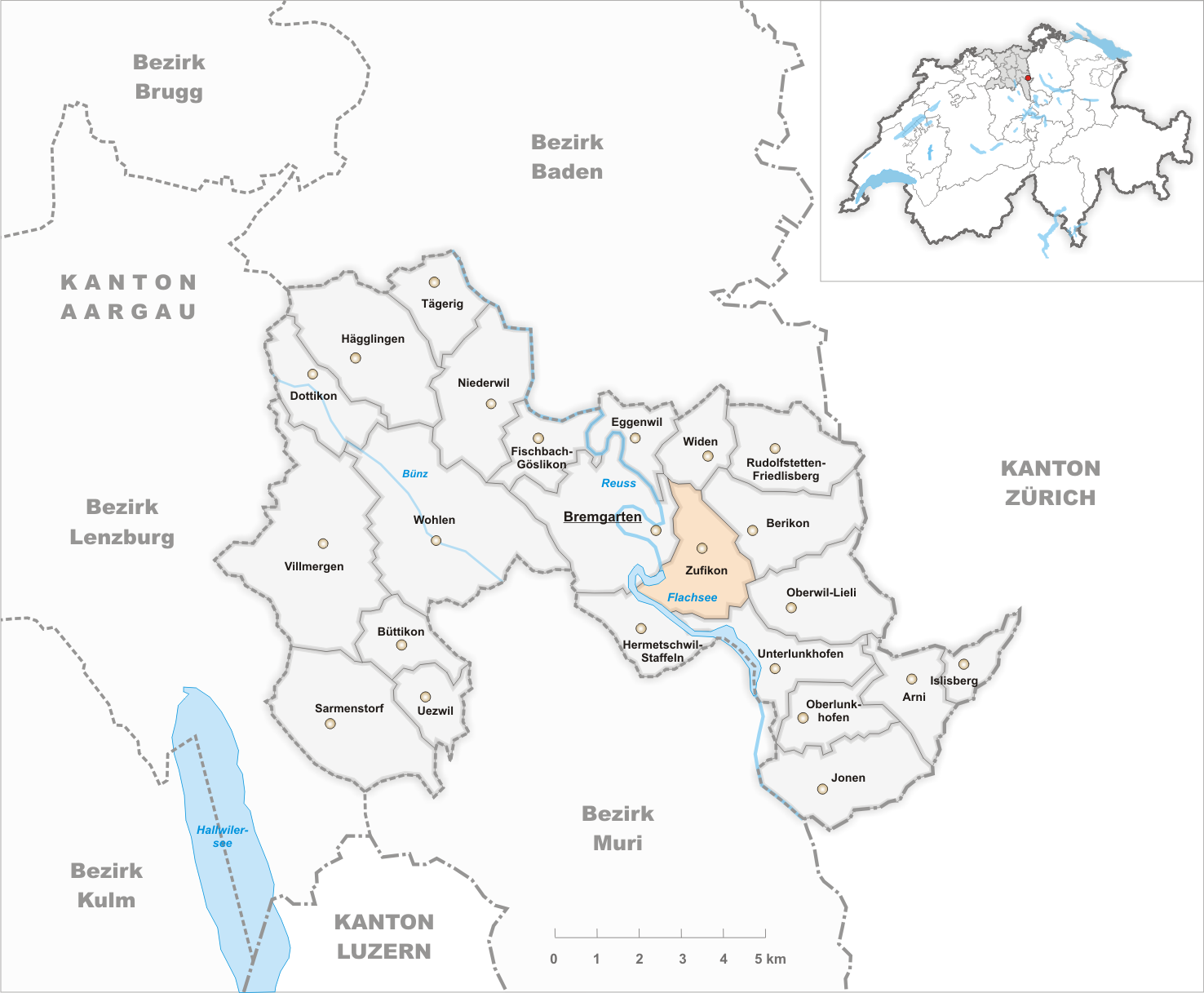|
Hermetschwil-Staffeln
Hermetschwil-Staffeln is a former municipality in the district of Bremgarten in the canton of Aargau in Switzerland. On 1 January 2014 the former municipality of Hermetschwil-Staffeln merged into the municipality of Bremgarten.Nomenklaturen – Amtliches Gemeindeverzeichnis der Schweiz accessed 13 December 2014 History Hermetschwil-Staffeln is first mentioned in 1064 as ''Hermenswil''. In 1390 it was mentioned as ''Hermeczwil''. The village grew up around Hermetschwil Convent. While the region was under Austrian control, the village was under the authority of the town of Muri. |
Bremgarten, Aargau
Bremgarten is a municipality in the Swiss canton of Aargau. It serves as seat of the district of Bremgarten. The medieval old town is listed as a heritage site of national significance. In 2013, Bremgarten was the first municipality in Europe to introduce laws forbidding asylum seekers from visiting certain public places such as libraries, swimming pools, schools and churches. On 1 January 2014 the former municipality of Hermetschwil-Staffeln merged into the municipality of Bremgarten.Nomenklaturen – Amtliches Gemeindeverzeichnis der Schweiz accessed 13 December 2014 History The area was known before 1140 as ''Bremgarten'', though the city wasn't founded until almost a century later. In 1230, a settlement was fo ...[...More Info...] [...Related Items...] OR: [Wikipedia] [Google] [Baidu] |
Rottenschwil
Rottenschwil is a municipality in the district of Muri in the canton of Aargau in Switzerland. History The earliest trace of a human settlement in the area around Rottenschwil, is a Roman era farm. The modern municipality of Rottenschwil is first mentioned in 1281 as ''Rotolfswile''. The major land owner in the area was Hermetschwil Abbey, but the Habsburgs held the vogtei office over the Abbey's land. With the conquest of the Aargau in 1415 those rights transferred to the Swiss Confederation. From 1415 until 1798, Rottenschwil was a part of the district of Muri in the Freie Ämter, which were governed as "subject lands" by all or some of the Confederates. A ferry over the Reuss river is first mentioned in 1312. In 1510, Muri Abbey sold their quarter of the profits from the ferry to the city of Bremgarten. Frequent floods strongly affected the population and buildings. In 1580 Hermetschwil Abbey helped construct a milldam on the river. During the Helvetic Republic (179 ... [...More Info...] [...Related Items...] OR: [Wikipedia] [Google] [Baidu] |
Bremgarten (district)
Bremgarten District is a Swiss district in the Canton of Aargau, corresponding to the valleys of the Reuss and Bünz rivers in the area known as the '' Freiamt''. Geography Bremgarten District has an area, , of . Of this area, 48.7% is used for agricultural purposes, while 30.9% is forested. The rest of the land, (18.1%) is settled. Demographics Bremgarten District has a population of (as of ). , there were 2,402 homes with 1 or 2 persons in the household, 11,781 homes with 3 or 4 persons in the household, and 9,773 homes with 5 or more persons in the household. The average number of people per household was 2.43 individuals. there were 10,969 single family homes (or 37.2% of the total) out of a total of 29,488 homes and apartments.Statistical Department of Canton Aargau accessed 20 January 2010 There were a total of 47 ... [...More Info...] [...Related Items...] OR: [Wikipedia] [Google] [Baidu] |
Besenbüren
Besenbüren is a municipality in the district of Muri in the canton of Aargau in Switzerland. History The first indication of human settlement near Besenbüren are paleo- and mesolithic items that were discovered in the ''Forenmoos''. The modern municipality of Besenbüren is first mentioned in the Acta Murensia, which was first drawn up in 1160 but included a number of various older documents, as ''Besenbürren''. The major landholders in the Middle Ages in Besenbüren were Muri and Engelberg Abbeys. Under the Habsburgs it belonged to the Muri district. After 1415 it belonged to the Boswil district. The rights that the Hermann of Heidegg received after the conquest of the Aargau by the Swiss Conderation remained with his family until 1617, when they were transferred to Muri Abbey. In the 19th century, agricultural employment and the straw plaiting industry provided nearly all the jobs in the municipality. In the second half of the 19th century the population decreased ... [...More Info...] [...Related Items...] OR: [Wikipedia] [Google] [Baidu] |
Unterlunkhofen
Unterlunkhofen is a municipality in the district of Bremgarten in the canton of Aargau in Switzerland. History Since pre-Christian times people have inhabited the areas around Unterlunkhofen. Archeological digs document a settlement of the ''Geisshof'' area since the Neolithic Age ( Horgen Culture, ca 2700-2400 BC). There are other significant discoveries from the early Iron Age (ca 800-450 BC), including the ''Bärhau'' burial site which is the largest of its kind in Switzerland. The area near the municipality also included a Roman era villa. In 1890 a Roman wall with marble facing and a magnificent six-color mosaic floor was excavated.Unterlunkhofen municipal website-History accessed 3 March 2010 [...More Info...] [...Related Items...] OR: [Wikipedia] [Google] [Baidu] |
Waltenschwil
Waltenschwil is a municipality in the district of Muri in the canton of Aargau in Switzerland. Geography Waltenschwil has an area, , of . Of this area, or 56.6% is used for agricultural purposes, while or 20.8% is forested. Of the rest of the land, or 22.6% is settled (buildings or roads), or 0.4% is either rivers or lakes.Swiss Federal Statistical Office-Land Use Statistics 2009 data accessed 25 March 2010 Of the built up area, industrial buildings made up 3.1% of the total area while housing and buildings made up 12.5% and transportation infrastructure made up 4.8%. while parks, green belts and sports fields made up 1.3%. Out of the forested land, 19.5% of the total land area is heavily forested and 1.3% is covered with orchards or small clu ... [...More Info...] [...Related Items...] OR: [Wikipedia] [Google] [Baidu] |
Zufikon
Zufikon is a municipality in the district of Bremgarten in the canton of Aargau in Switzerland. History A single archeological find dates human habitation in the area to the Bronze Age. The first written reference to the village occurred in 1150. Geography Zufikon has an area, , of . Of this area, 49.9% is used for agricultural purposes, while 27.1% is forested. Of the rest of the land, 20.7% is settled (buildings or roads) and the remainder (2.3%) is non-productive (rivers or lakes). Coat of arms The blazon of the municipal coat of arms is ''Argent a Pale Sable between two Keys palewise Azure with wards downwards and inwards.'' accessed 4 March 2010 Demographics Zufikon has a population (as of ) of . , 17.4% of the population was made up of foreign nationals.[...More Info...] [...Related Items...] OR: [Wikipedia] [Google] [Baidu] |
Reuss (river)
The Reuss ( Swiss German: ''Rüüss'') is a river in Switzerland. With a length of and a drainage basin of , it is the fourth largest river in Switzerland (after the Rhine, Aare and Rhône). The upper Reuss forms the main valley of the canton of Uri. The course of the lower Reuss runs from Lake Lucerne to the confluence with the Aare at Brugg and Windisch. The Reuss is one of the four major rivers taking their source in the Gotthard region, along with the Rhine, Ticino and Rhône. Geography Course The Gotthardreuss rises in the Gotthard massif, emerging from Lago di Lucendro (reservoir built in 1947; elevation 2,131 m) in the canton of Ticino and passing into the canton of Uri below the ''Brigghubel'' (1,898 m). The Furkareuss rises east of Furka Pass (2,429 m), early joined by the ''Blaubergbach'' (sourced by two mountain lakes on 2,649 m) and several other creeks sourced by still existing glaciers, such as ''Sidelengletscher'' (3,1 ... [...More Info...] [...Related Items...] OR: [Wikipedia] [Google] [Baidu] |
Swiss People's Party
The Swiss People's Party (german: Schweizerische Volkspartei, SVP; rm, Partida populara Svizra, PPS), also known as the Democratic Union of the Centre (french: Union démocratique du centre, UDC; it, Unione Democratica di Centro, UDC), is a national-conservative, right-wing populist political party in Switzerland. Chaired by Marco Chiesa, it is the largest party in the Federal Assembly, with 53 members of the National Council and 6 of the Council of States. The SVP originated in 1971 as a merger of the Party of Farmers, Traders and Independents (BGB) and the Democratic Party, while the BGB, in turn, had been founded in the context of the emerging local farmers' parties in the late 1910s. The SVP initially did not enjoy any increased support beyond that of the BGB, retaining around 11% of the vote through the 1970s and 1980s. This changed however during the 1990s, when the party underwent deep structural and ideological changes under the influence of Christoph Blocher; the S ... [...More Info...] [...Related Items...] OR: [Wikipedia] [Google] [Baidu] |
Coat Of Arms
A coat of arms is a heraldic visual design on an escutcheon (i.e., shield), surcoat, or tabard (the latter two being outer garments). The coat of arms on an escutcheon forms the central element of the full heraldic achievement, which in its whole consists of a shield, supporters, a crest, and a motto. A coat of arms is traditionally unique to an individual person, family, state, organization, school or corporation. The term itself of 'coat of arms' describing in modern times just the heraldic design, originates from the description of the entire medieval chainmail 'surcoat' garment used in combat or preparation for the latter. Rolls of arms are collections of many coats of arms, and since the early Modern Age centuries, they have been a source of information for public showing and tracing the membership of a noble family, and therefore its genealogy across time. History Heraldic designs came into general use among European nobility in the 12th century. Sys ... [...More Info...] [...Related Items...] OR: [Wikipedia] [Google] [Baidu] |
2007 Swiss Federal Election
Elections to the Swiss Federal Assembly, the federal parliament of Switzerland, were held on Sunday, 21 October 2007. In a few cantons, a second round of the elections to the Council of States was held on 11 November, 18 November, and 25 November 2007. For the 48th legislative term of the federal parliament (2007–2011), voters in 26 cantons elected all 200 members of the National Council as well as 43 out of 46 members of the Council of States. The other three members of the Council of States for that term of service were elected at an earlier date.The date of the election of the members of the Council of States is a matter of cantonal law. 24 cantons have chosen to let the elections coincide with the federally regulated National Council elections. Two cantons are electing their members of the Council of States at an earlier date: Zug reelected its incumbents Peter Bieri and Rolf Schweiger on 29 October 2006, while Appenzell Innerrhoden elected Ivo Bischofsberger as its ... [...More Info...] [...Related Items...] OR: [Wikipedia] [Google] [Baidu] |
Education In Switzerland
The education system in Switzerland is very diverse, because the constitution of Switzerland delegates the authority for the school system mainly to the cantons. The Swiss constitution sets the foundations, namely that primary school is obligatory for every child and is free in state schools and that the confederation can run or support universities. The minimum age for primary school is about six years in all cantons but Obwalden, where it is five years and three months. After primary schools, the pupils split up according to their abilities and intentions of career paths. Roughly 25% of all students attend lower and upper secondary schools leading, normally after 12 school years in total to the federal recognized matura or an academic Baccalaureate which grants access to all universities. The other students split in two or more school-types, depending on the canton, differing in the balance between theoretical and practical education. It is obligatory for all children to a ... [...More Info...] [...Related Items...] OR: [Wikipedia] [Google] [Baidu] |










